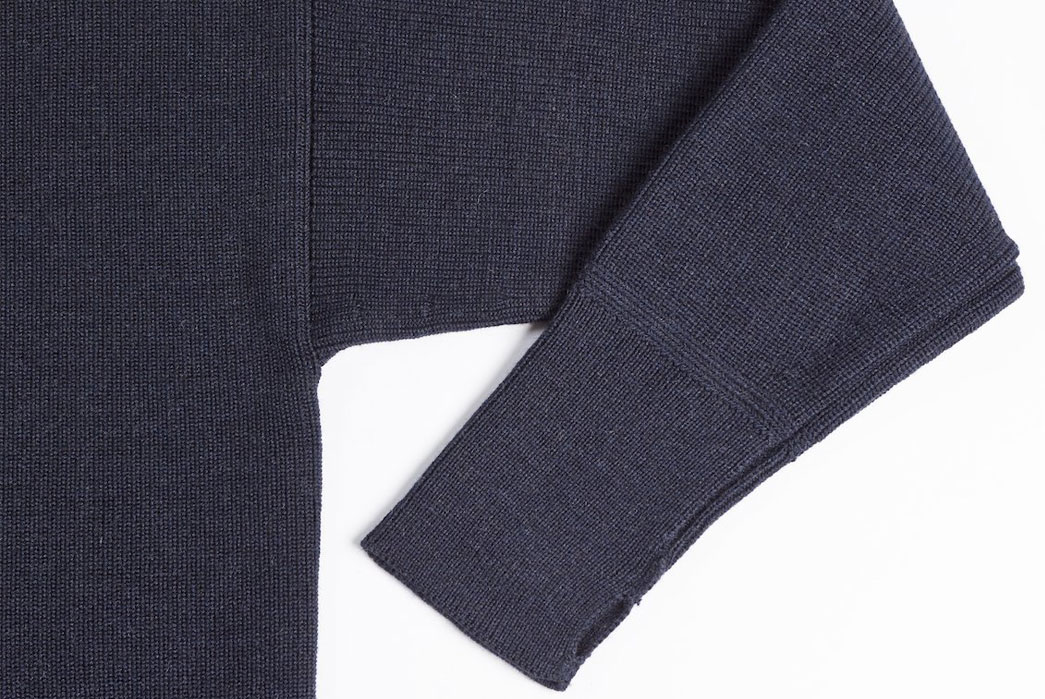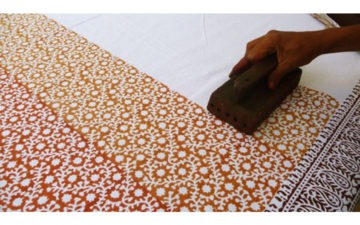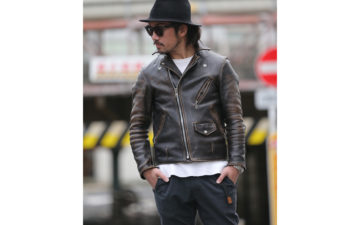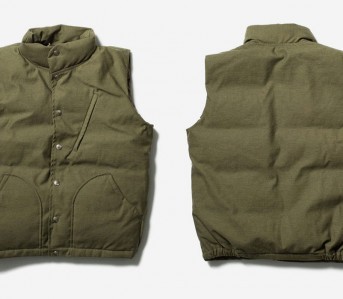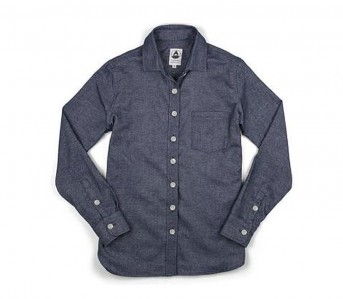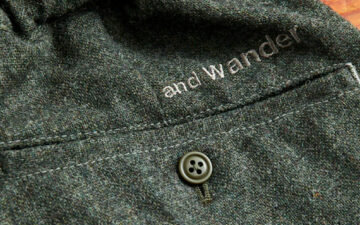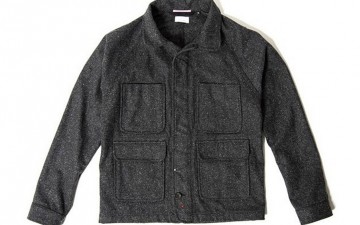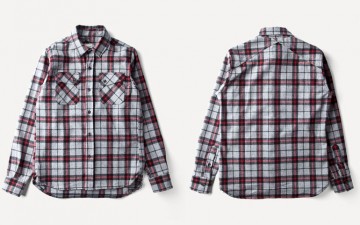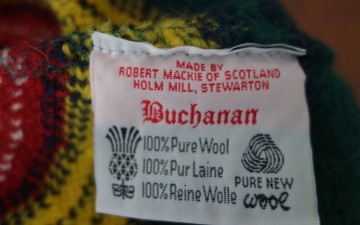Sweater season is almost upon us and we thought we would take it upon ourselves to break down for you the different types of wool and animal fibers that compose them.
To help you separate your wools from your hairs and to give you an overview of the different properties and pros and cons associated with each, this guide intends to cover most frequently found names on the inside labels of your wool garments, including Lambswool, Merino, Cashmere, Angora, Mohair, and Alpaca.
The Basic Benefits and Types of Wool
Wool and hair in garments is something we humans have used since at least 6000BCE, when ancient Iranians began to domesticate wool sheep, to keep our bodies warm. What started out as a basic survival instinct for us hairless mammals at the very top of the food chain has since evolved into an industry of farming domesticated animals in the name of fashion. True, many people do still depend on clothes for utilitarian purposes, but many also have the luxury of being able to hand pick their optimal choice of knitwear, whether it is light or heavy, natural or dyed, merino or cashmere.
Aside from the soft and luxurious feeling very often associated with the popular cashmere, it can be difficult for many to distinguish between the different types of wool and hair. Although there are many similarities in both the farming procedures and general properties of wool and hair, they’re usually distinguished between what animal they’re sourced from. Wool is sourced from sheep (Merino, Lincoln, Dorset etc.) whereas Hair is sourced from other animals such as goats (cashmere, mohair), alpacas (alpaca) and rabbits (angora).
What is Wool?
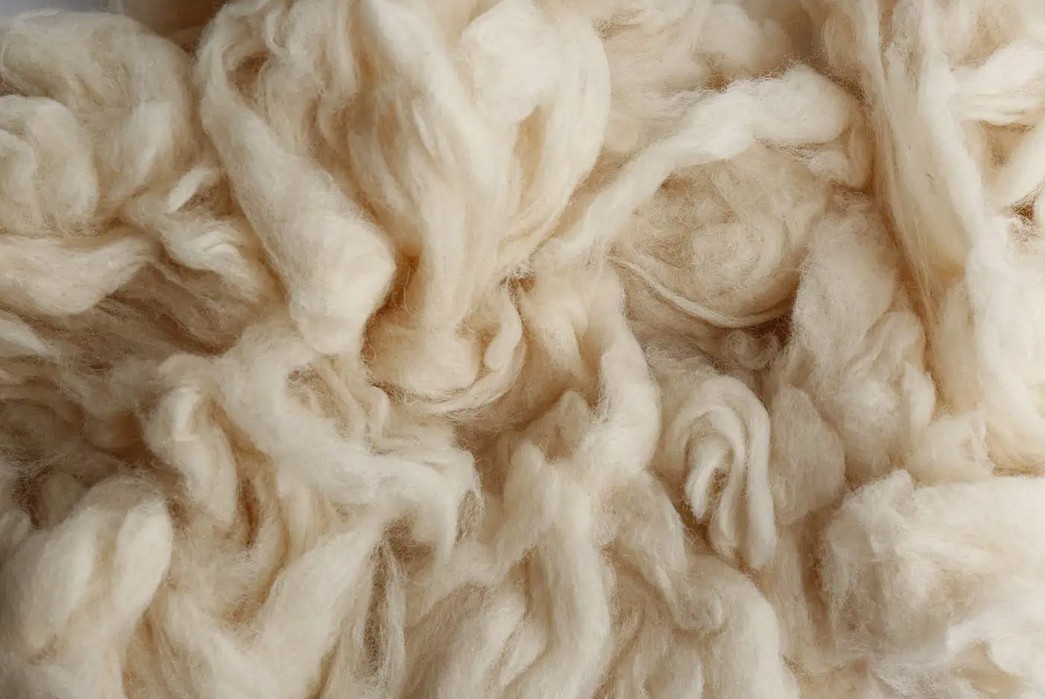
Image via SoCosy.
Wool refers to the full fleece on the outside skin of sheep whereas hair is typically divided into two types: the topcoat (also referred to as ‘guard hair’) and the undercoat. The guard hair is on the outside of the animal and typically used for rain protection; it’s thicker and coarser than the undercoat whose fine hair is used to keep the animal warm.
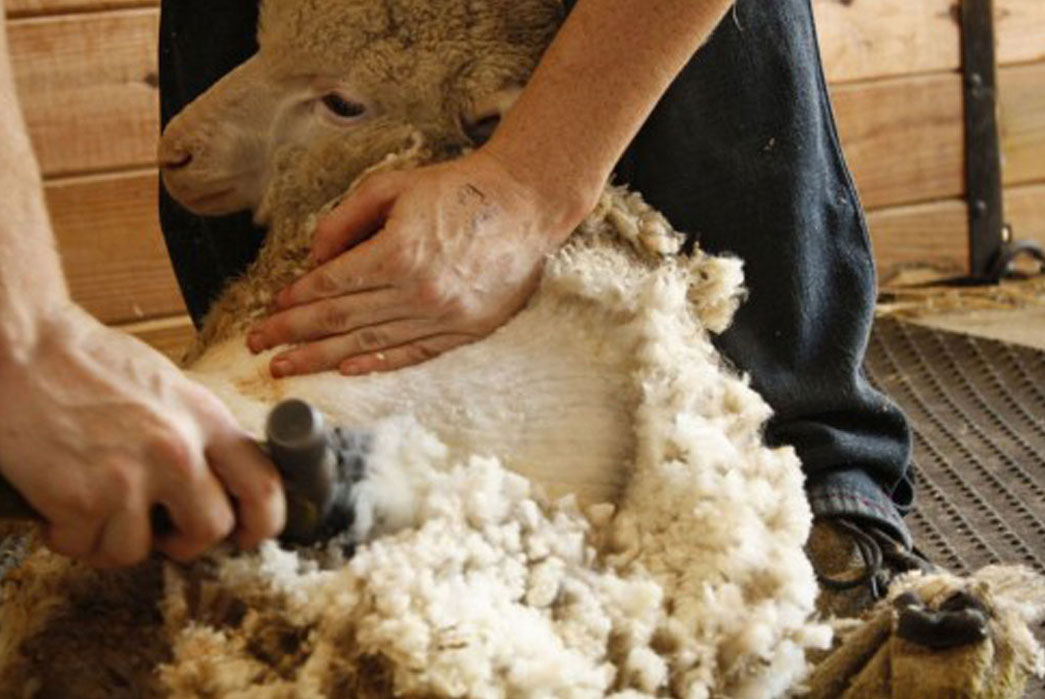
Sheep shearing. Image via Wovember.
The undercoat is soft, highly-prized, and generally favourable for use in knitwear, but the two are sometimes blended into the same finished yarn (e.g. in mohair). Wool fibers are generally shorter, thicker and has more pronounced scales whereas hair is generally longer fibres, finer and has less pronounced scales.
The Benefits of Wool
Our columnist Robert Lim recently declared his love for wool, but allow us to remind you why. Wool and hair have many general properties in common, making them desirable for use in a variety of garments:
- They are generally durable, flame retardant, and water repellent.
- They offer good insulation due to their moisture wicking properties and ability to trap air.
- They take dye extremely well and both sheep’s wool or hair from alpacas offer a wide range of natural colors that require no additional dyeing.
- They generally have a small environmental impact as compared to using plant fibers.
- On top of that, wool and hair are easily renewable and recyclable.
- And while it requires both food, energy, water, and medicine to keep animals reared, the environmental impact naturally varies from factory to factory, with some wool and hair processing being organic and free from pesticides and chemicals.
A lot of the desirable properties associated with wool and hair stem from a natural protein, called keratin, which is found in the fibers of the hair and skin of mammals. The bilateral core of keratin causes the fibers to twist and bend, giving wool its natural crimp and resilience. Another beneficial property of keratin lies in its flame-resistance, which unlike with plant fibers, makes wool and hair fibers self-extinguishable once no longer directly exposed to a flame.
One drawback, however, is that wool and hair become weaker when exposed to water, with wool losing about a quarter of its strength when wet. Another disadvantage of wool and hair (and other natural fibers) is their tendency to become moth food, a problem not shared by synthetics. That being said, the beneficial properties of wool and hair arguably makes it unrivaled by any man-made fiber known today.
How to Determine the Quality of Wool
Aside from various types of animals and breeds, several things determine the quality of wool and hair. Wool and hair are both graded on their properties such as strength, staple length (length of the fiber), and fineness (diameter measured in microns), as well as consistency and defects.
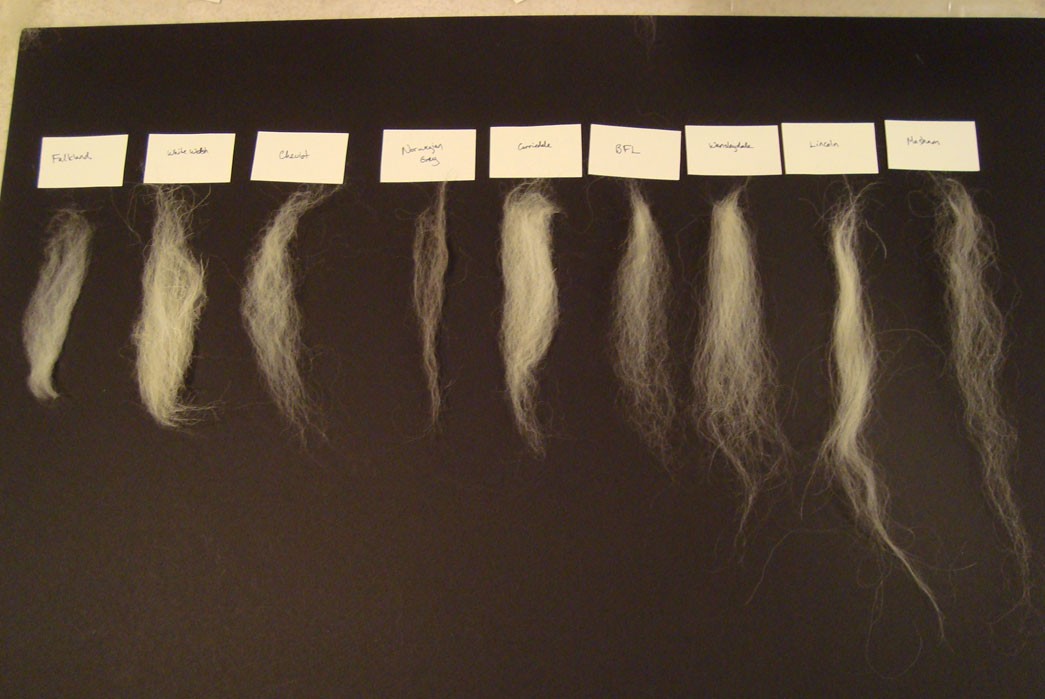
Staple Length. Image via Desigknit.
Generally, the first shear from any animal is the softest and considered the most valuable as one end remains uncut. After shearing, the staples are spun into different types of yarn generally separated as carded (woolen) and combed (worsted). Wool and hair are often mixed with other fibers (natural or man-made) to lower cost or to impart other qualities, for example, in a sweater to improve elasticity, durability, and to help it keep its shape. It’s referred to as an ‘intimate blend’ when the individual characteristics are lost to the combination, like a jumper from an intimate blend with 20% nylon is likely to lack some of the properties of a 100% woolen jumper, like warmth, moisture wicking, etc.
There are many different breeds of sheep used in wool production and their fibers range from roughly 10-50 microns in diameter and 1.5-4.5 inches in staple length. The various breeds come in different shapes and sizes, and live in different countries and climates, that along with age, health, and diet affect the quality of their fleece.
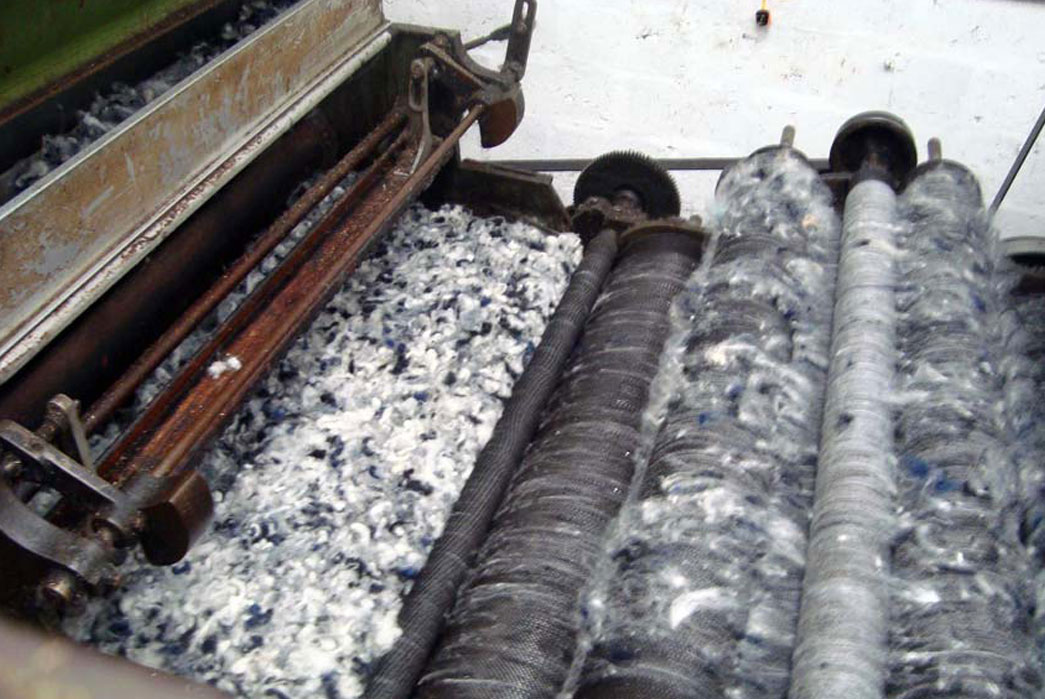
Carding wool for Harris Tweed. Image via Scotweb.
Wool has a low tenacity (the ultimate force it takes to break the fiber), which is worsened when wet, but wool is able to stretch up to a quarter of its size before breaking. Wool fibers are generally durable and are able to bend a thousand times more than man-made fibers. The pronounced scales in the wool fibers makes woolen fabrics more prone to tangling and thus relevant for nonwovens like felt, but it also increases the tendency of shrinkage.
The Most Common Types of Wool
Now that we know all about the general properties of wool and hair, let’s break down some of the most common types.
Lambswool
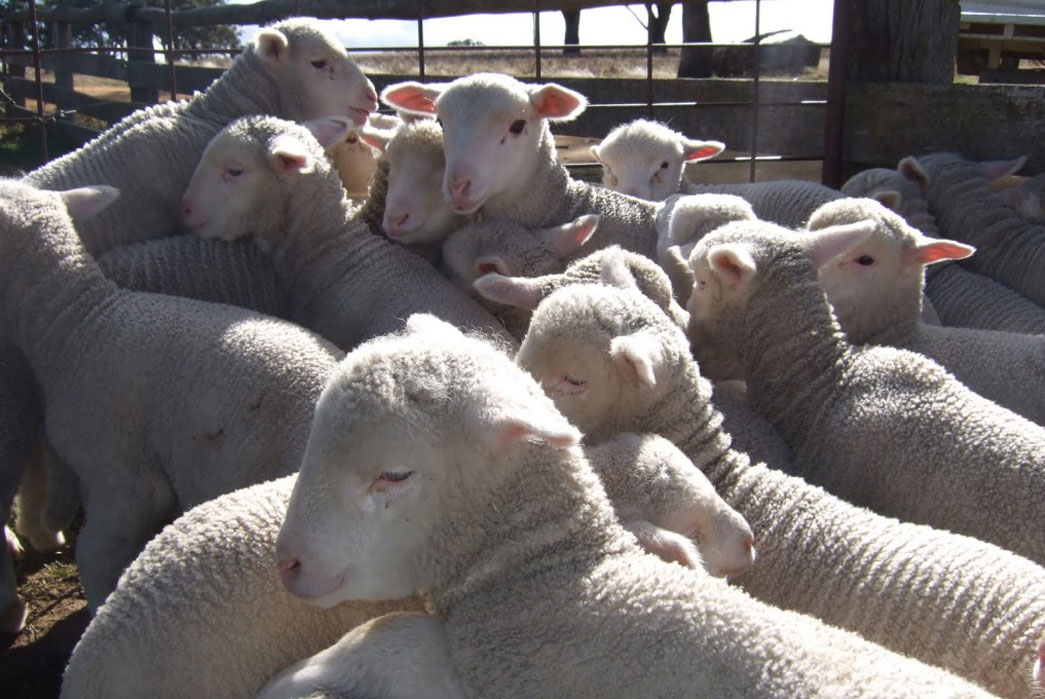
Lambs used for lambswool
As with most wool and hair, the first shearing of sheep generally produces the finest and softest wool. This is referred to as Lambswool and is typically shorn from lambs younger than seven months old. Sheep yield anywhere from one to thirteen kilos annually depending on breed, health factors, etc.
Some breeds produce a fleece with a high resilience which is hard wearing and therefore good for carpets, rugs, and upholstery while other breeds produce a fine fleece with a softer hand feel which is thus popular in clothing.
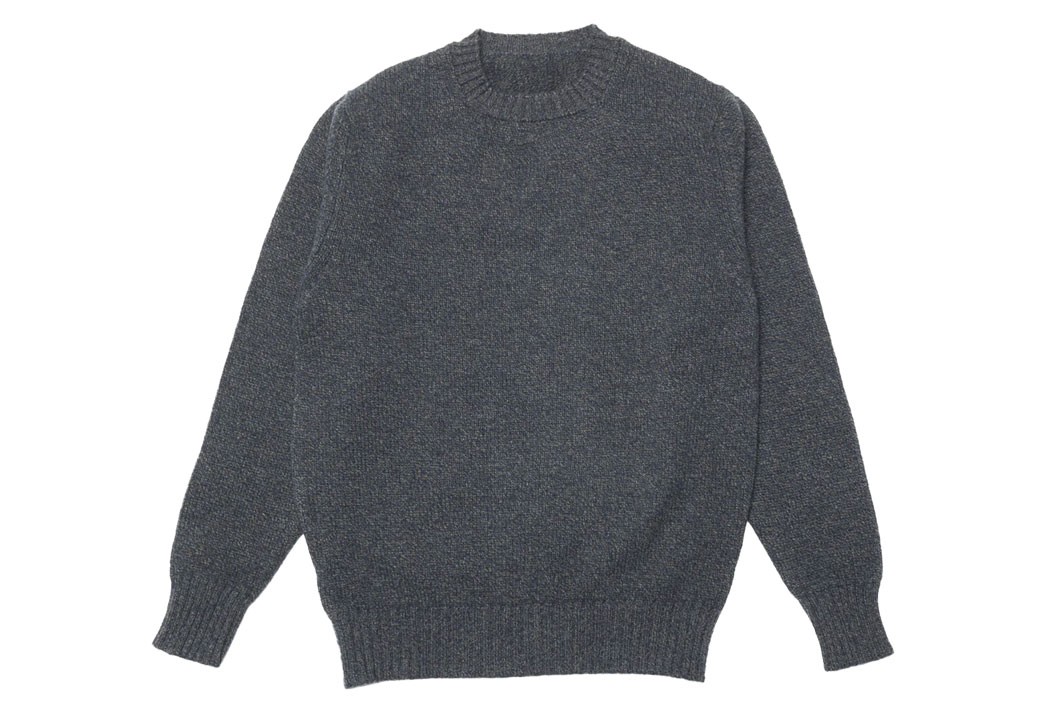
Scottish made lambswool crewneck sweater available for $265 at Malloch’s.
Merino
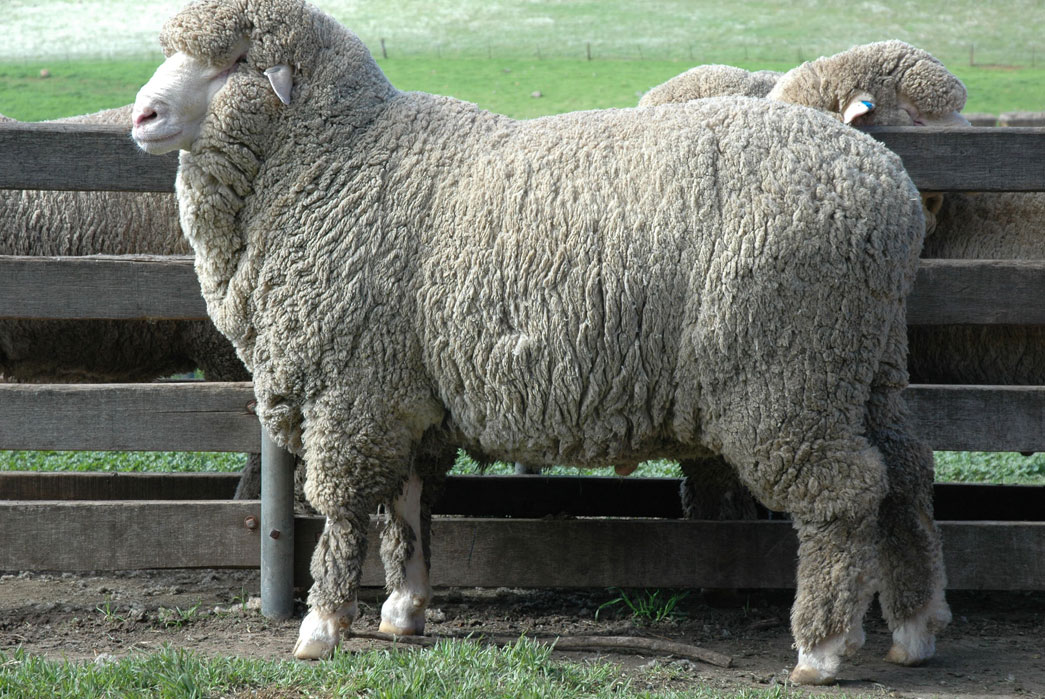
Merino wool sheep. Image via Deborah Silver.
The finest and softest sheep’s wool is Merino which comes from the Merino sheep. It is the most popular breed of sheep used for clothing and produces the most luxurious wool, famous for its fine staples at about 20-25 microns in diameter (superfine merino can sometimes be down to 17 microns) and a soft hand feel. It has excellent drape due to its long staples at approximately 4.5 inches. The sheep originates from Spain, but nowadays about 80% of all Merino comes from Australia.
Like other sheep’s wools, merino needs scouring prior to being spun to yarn which is an energy and time-consuming process involving washing and rinsing the wool. This gets rid of the fatty grease lanolin, which is a by-product used in cosmetics, but it means that only about half of the initial fleece can be used in the production of a garment. The scouring process is unique to wool, as hair from goats, alpacas, or rabbits doesn’t contain lanolin. Yet producing merino is still not as inefficient as the production of cashmere.
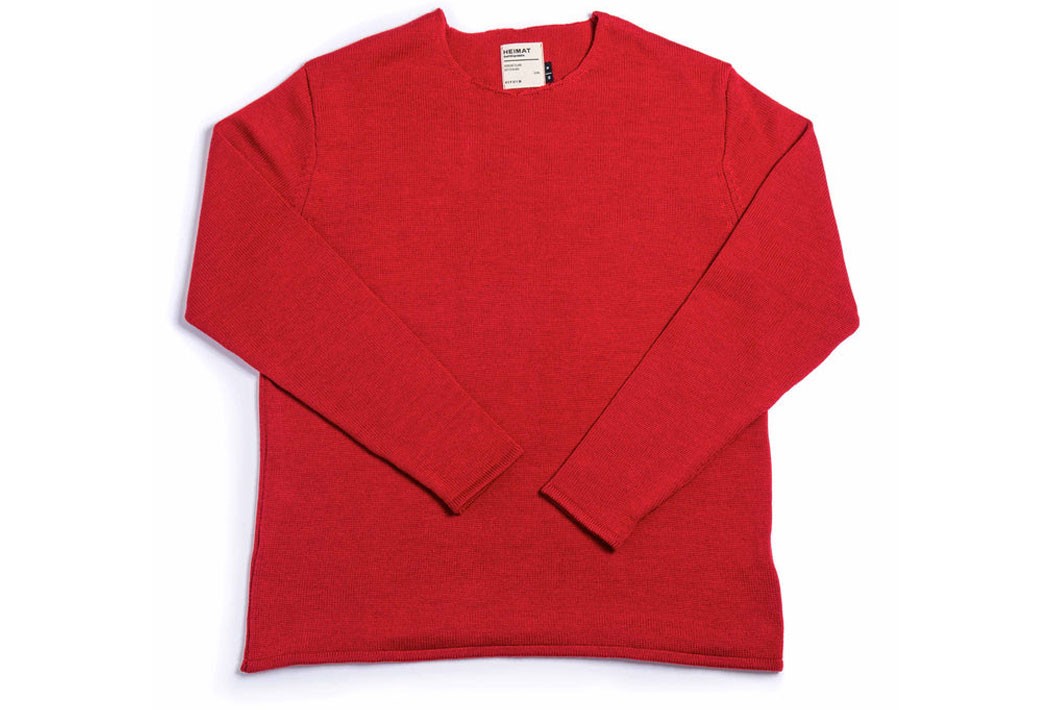
Merino Wool Harbour Sweater from Heimat Textil. Knit in Germany from 100% extra fine virgin merino wool.
Cashmere
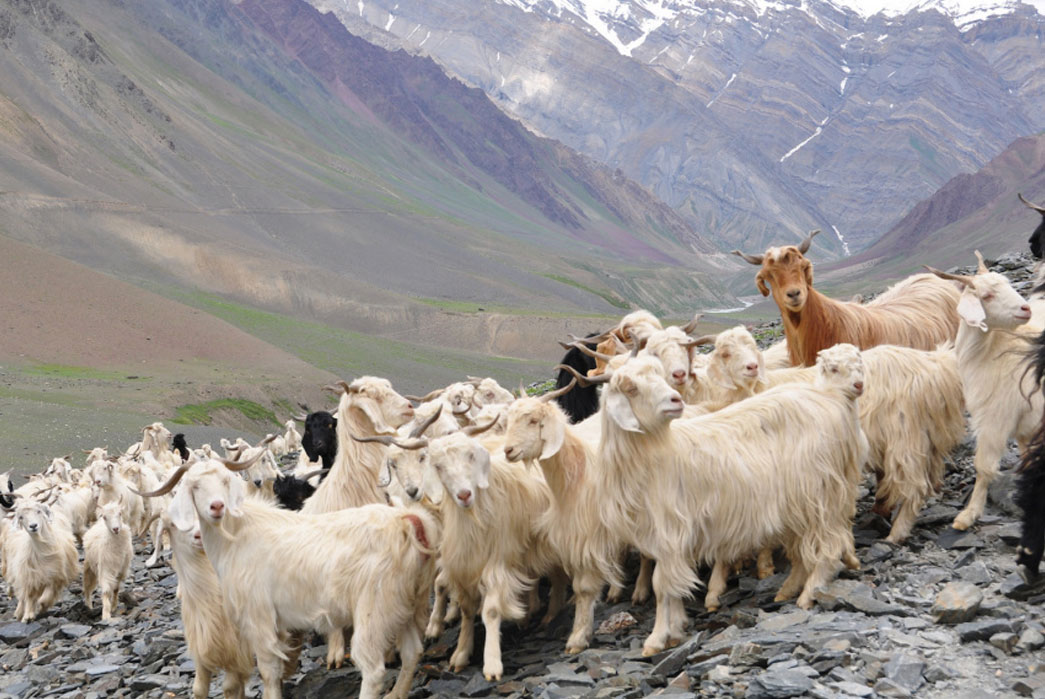
Cashmere goats. Image via Business of Fashion.
Cashmere is obtained from the undercoat of the cashmere goat which only makes up about one-quarter of the total fleece. Known for its luxurious soft hand feel, cashmere is extremely fine with a diameter at around 18 microns, similar to superfine merino. The finest cashmere comes from the neck region of the undercoat which has to be combed over one or two weeks. One goat typically yields 150 grams of cashmere a year which is a small output compared to the rest of the fibers, thus explaining cashmere’s high price.
It has a similar resilience to sheep’s wool, but the fine fibers of cashmere generally make it more delicate than wool. When cashmere is finished into clothing, the nap is typically raised on the wool to improve the softness. Most modern napping machines use metal tines (e.g. lambswool), but more traditionally, dried teasel pods were used and are still considered superior for soft and delicate materials like cashmere.
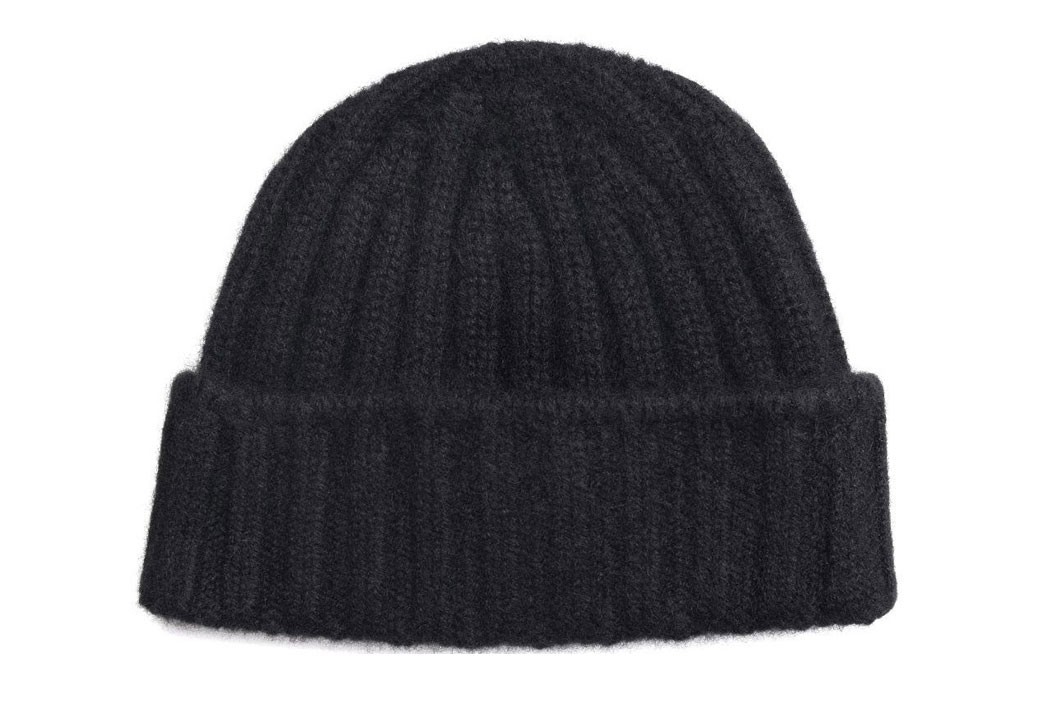
Cableami Cashmere Beanie available for $95 at Brooklyn Tailors. Made in Japan.
Mohair
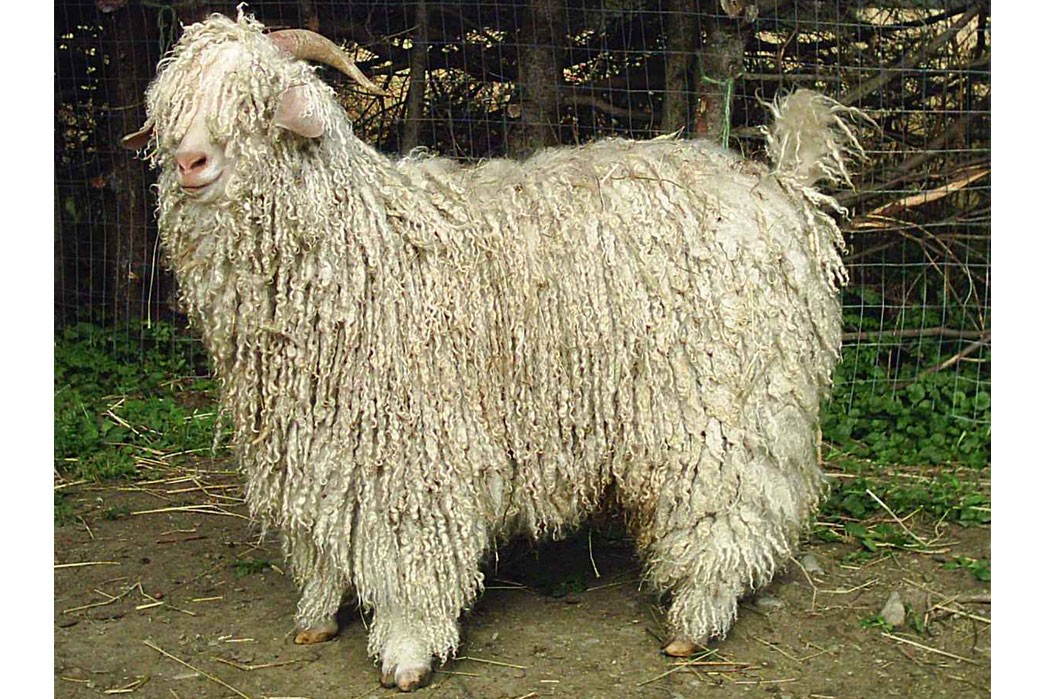
Mohair sheep. Image via T-Ray Woolies.
Mohair is obtained from the Angora goat (sometimes confused with the angora yarn that comes from the angora rabbit). It has a larger undercoat compared to the cashmere goat, but the guard hairs from the topcoat are, unlike with cashmere, often mixed with the hairs from the undercoat. This gives mohair its distinct, frizzy look with the slightly stiff short hairs visible in the final product.
Mohair fibers are about 25-40 microns which is similar to wool, but it’s known to be stronger, smoother, and more resilient than wool due to its long staples at 4-6 inches. The finest mohair fibers come from the first three shearings of the Angora goat. It has less pronounced scales than wool which reduces the tangling/shrinkage and also minimizes the dirt it picks up. Angora goats are farmed similarly to sheep, but at a much smaller scale, which might be why mohair is slightly more expensive than wool. One Angora goat yields between 3-5 kilos of mohair in a year which is significantly more than the cashmere goat, but its end product is not as soft and exclusive.

Cobain in his mohair blend cardigan during Nirvana’s famous MTV Unplugged performance.
One of the most visible mohair wearers was Nirvana frontman Kurt Cobain, whose mohair blend cardigan recently fetched $334,000 at auction. But you don’t have to pay that much if you want something similar. Japanese brand Jelado has reproduced the cardigan to the best of their ability and you can find it at Clutch Cafe.
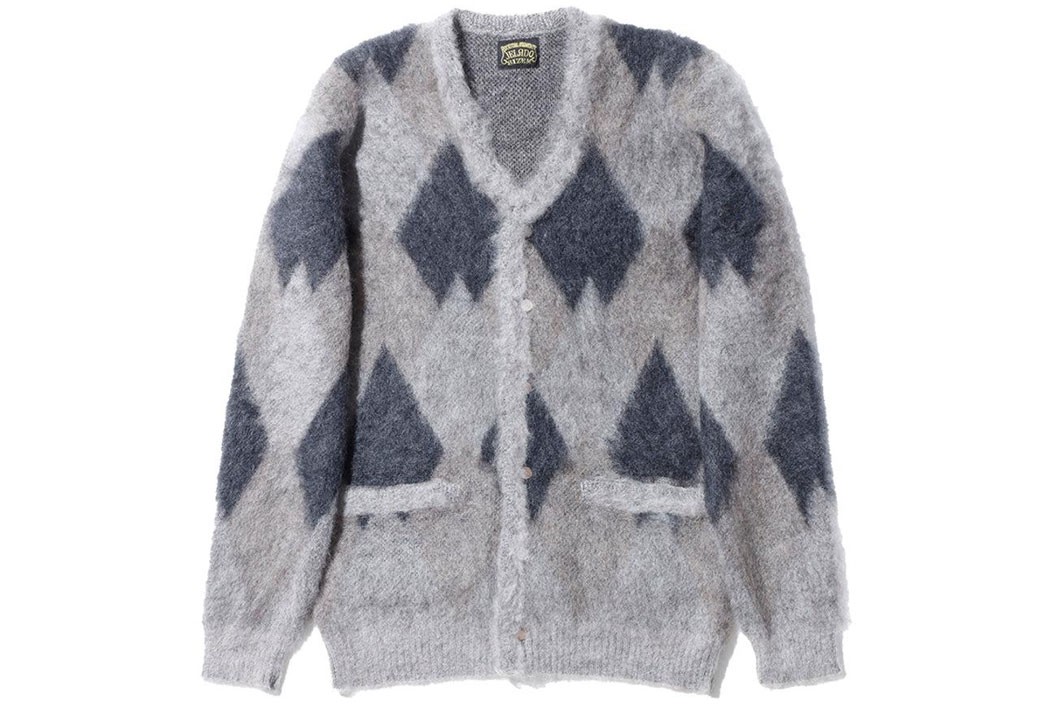
Jelado’s ‘Cobain’ mohair cardigan, available for $480 at Clutch Cafe.
5. Angora
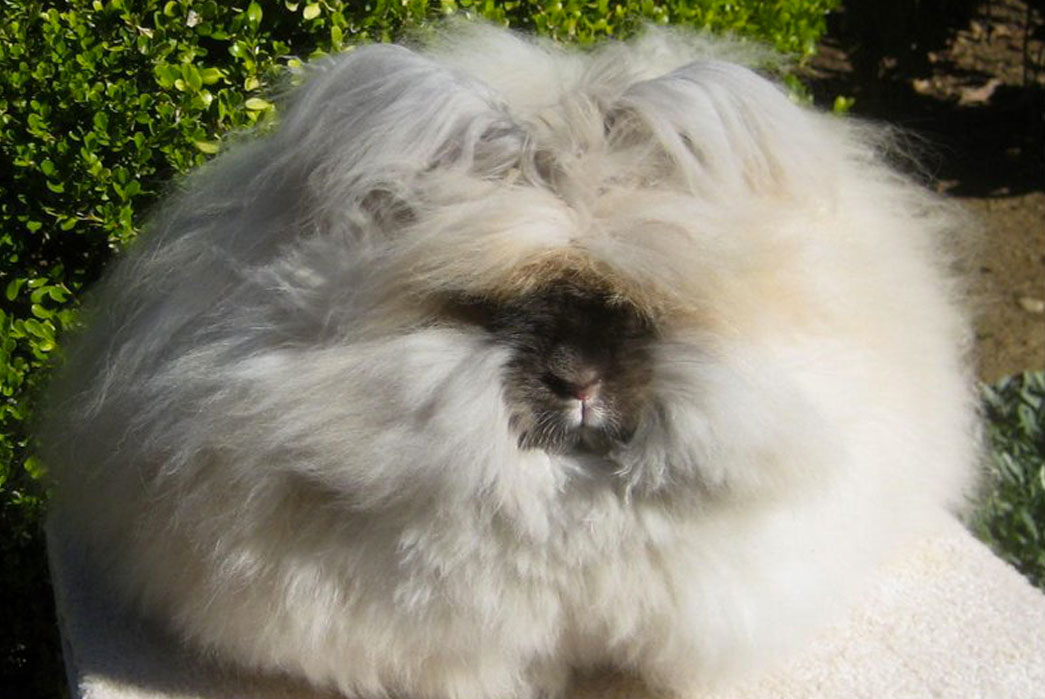
Angora rabbit, image via Huffington Post.
Angora comes from the undercoat of the Angora rabbit whose fibers are extremely fine at about 10-15 microns, which makes Angora incredibly soft and the finest of all the aforementioned. The quality of angora depends on the proportion of guard hair and undercoat making up the finished angora.
There are four main breeds: English, French, Giant, and Satin, which are all domesticated for angora production. The hair is very light and not very strong, with a low resilience. For that reason, angora is often blended with stronger or more elastic materials. Angora production is both time-consuming and costly and the ethics of the production method has been questioned by many. Farming angora sometimes involves the rabbits being kept in separate cages and in near darkness to protect their undercoat.
To further protect their hair from matting, the rabbits are combed regularly. The hair for the finished angora is obtained either by plucking or shearing, each having its own advantages. Plucking makes for the best quality, but is more time-consuming – shearing makes for a lesser quality but will yield more hair. The Angora rabbit grows hair quickly, but one rabbit will still only produce around 400 grams a year at best.
Alpaca
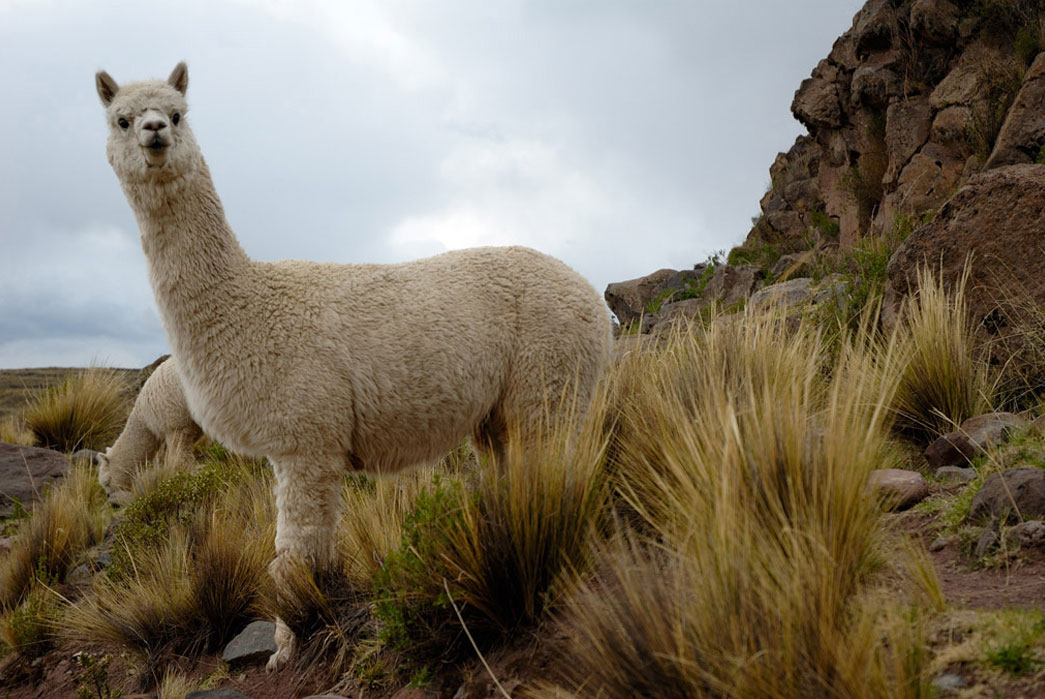
Alpaca. Image via Wikipedia.
Alpaca hair comes from the Alpaca, an animal living in South America that produces some of the finest hair available. Ranging from 15-40 microns, alpaca fibers can be very fine and soft, but are generally quite itchy at or over 30 microns, and thus less likely to be used for clothing. Generally a little bit stiffer than merino or cashmere, alpaca fibers are sometimes blended with wools like Merino to improve its draping qualities.
Like hair from goats and rabbits, it needs less preparatory steps compared to wool, and the hair from Alpaca hair is a natural hypoallergenic, arguably making it superior to cashmere. The Suri Alpaca, in particular, is a very rare breed, yielding some of the most exclusive alpaca. The different breeds of Alpacas offer a wide range of natural colors, with five main colors, and furthermore twenty-two shades to choose from. An average Alpaca will yield approximately 3.5 kilos in a year.
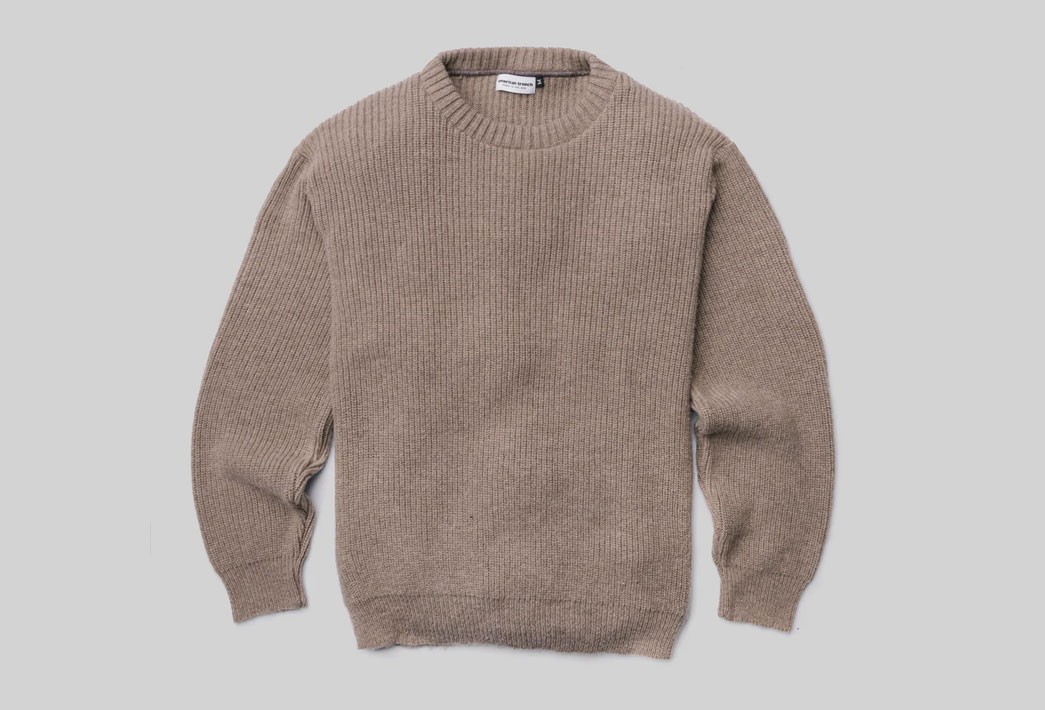
American Trench’s made in USA and undyed 100% alpaca hair sweater, available for $250 on their website.
How to Select the Right Wool For You
There are many aspects to take into consideration when choosing the right jumper for your specific needs, something this guide will hardly be able to do for you. Some jumpers are heavy and hard-wearing, some are light and fuzzy, some have intricate jacquard patterns, some are plain knit, some are naturally colored and some are dyed, some are washable and some are dry clean only.
These are all properties that can be found in woolen and hairy jumpers, but as much as it depends on the animals from where the yarn is sourced, the composition, and the preparatory steps from fibers to yarn, it also depends on the design and the machines that knits the fabric. Bear in mind that it’s possible to make soft jumpers from pure lambswool and rigid knitwear from pure merino. However, the design and knitting technology is a whole chapter of itself.
Alpaca, cashmere, and Angora knitwear are all very exclusive and generally have the highest price points. But as much as it depends on the animal and the breed, it’s important to remember that factors like age, health, and stress also affects the quality of the yarn and thus the final product. Angora (and other fine fibers) is generally too delicate to be associated with workwear; it’s very much a fancy material which is often used in bright, fluffy women’s jumpers. Angora production is furthermore an industry that many people and animal welfare associations have had issues with in the past, due to a lot of Angora farming having taken place in countries with little to no animal welfare standards.
If you want sustainable and hard-wearing woolens, here are a few brands we recommend:


